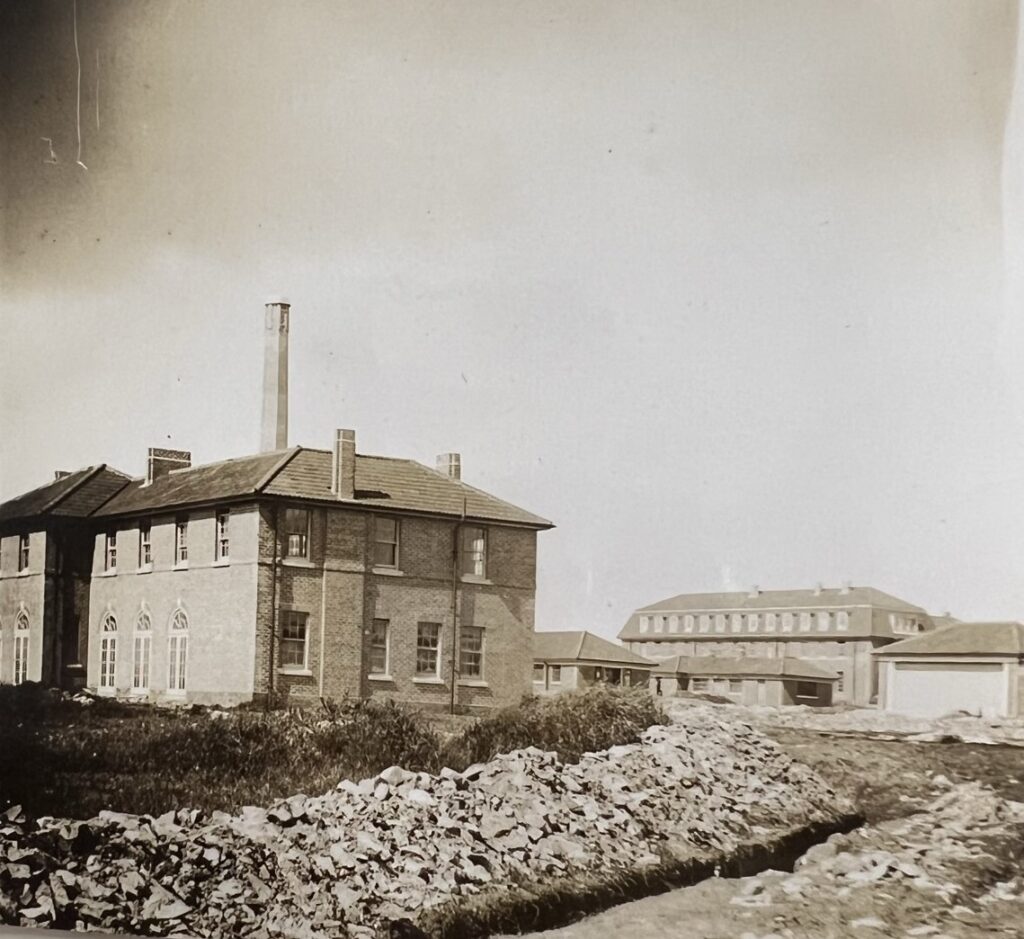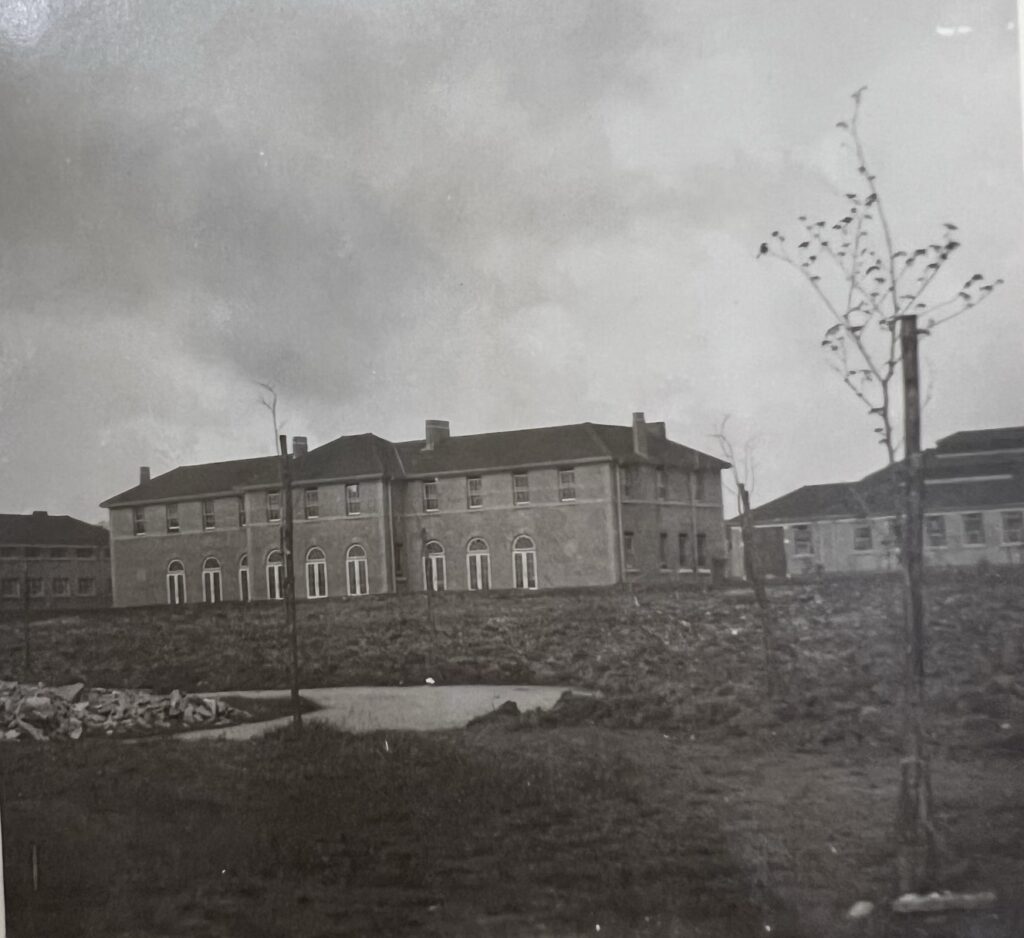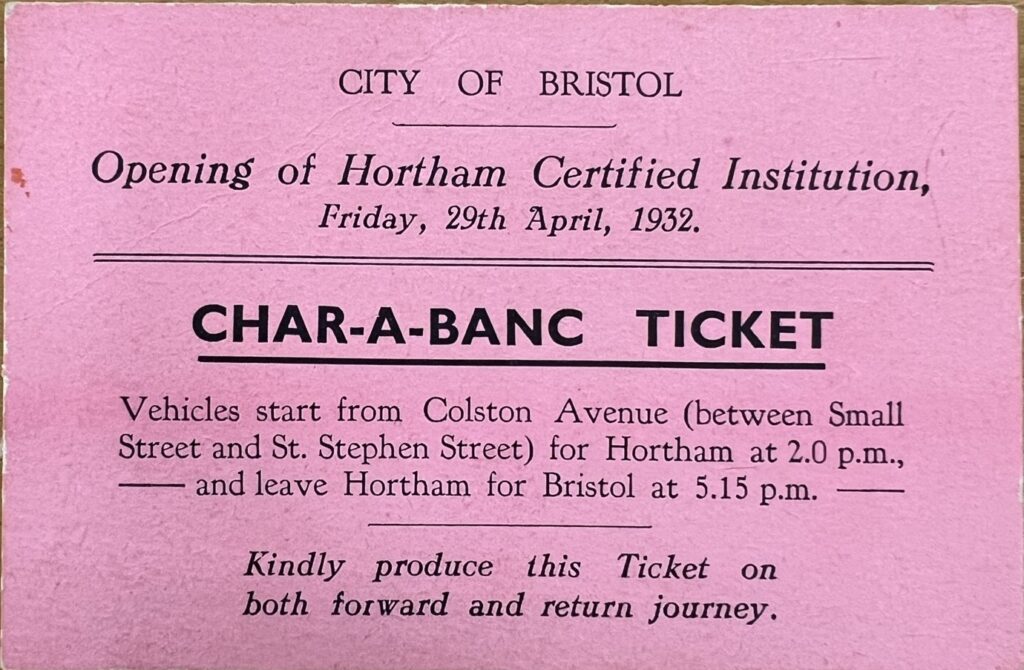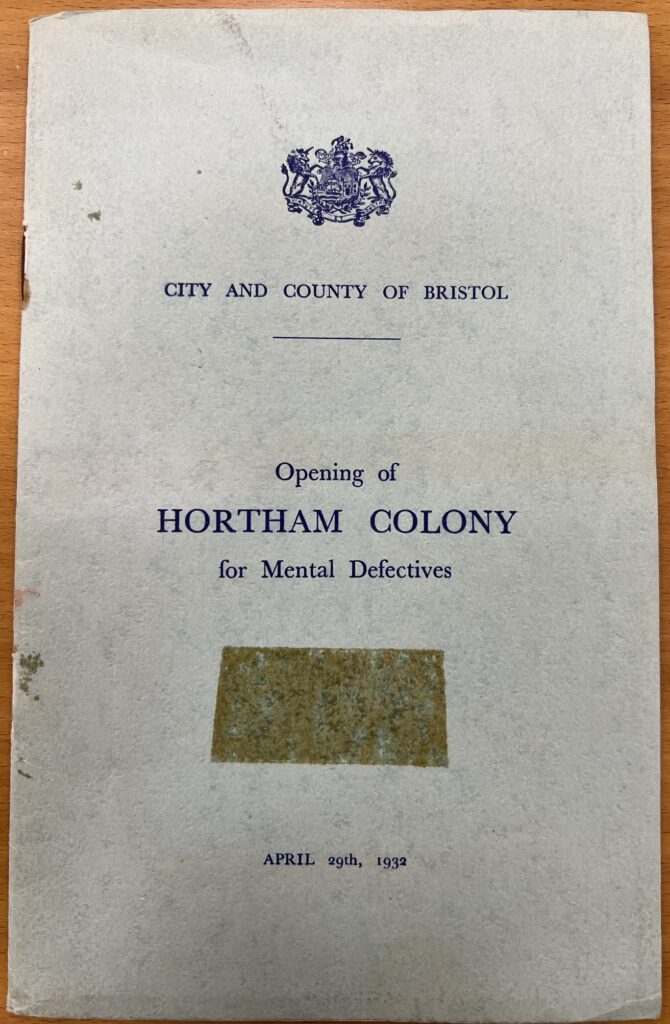With the inception of the Mental Deficiency Act 1913, it was now the responsibility of the local authorities to provide accommodation for those in need. Under that very legislation Bristol City Council acquired the land that went on to be known as Hortham Colony then later, Hortham Hospital.

Due to the outbreak of World War one, little could be done immediately following the creation of the Act. Initially a board of guardians was created as Bristol City Council acknowledged their responsibilities. This involved them creating the provision of accommodation for the Mental Defectives at Southmead Institution and Stapleton Poor Law Institution. In turn it gave the council time to design and build dedicated accommodation. The search for a suitable site took some time, one of the original sites considered is what is now part of Southmead housing estate. In the end it was agreed the Hortham site, which was previously used as low quality agricultural land, was preferable. 126 acres was purchased at the price of £4,788 – £225k in today’s money.
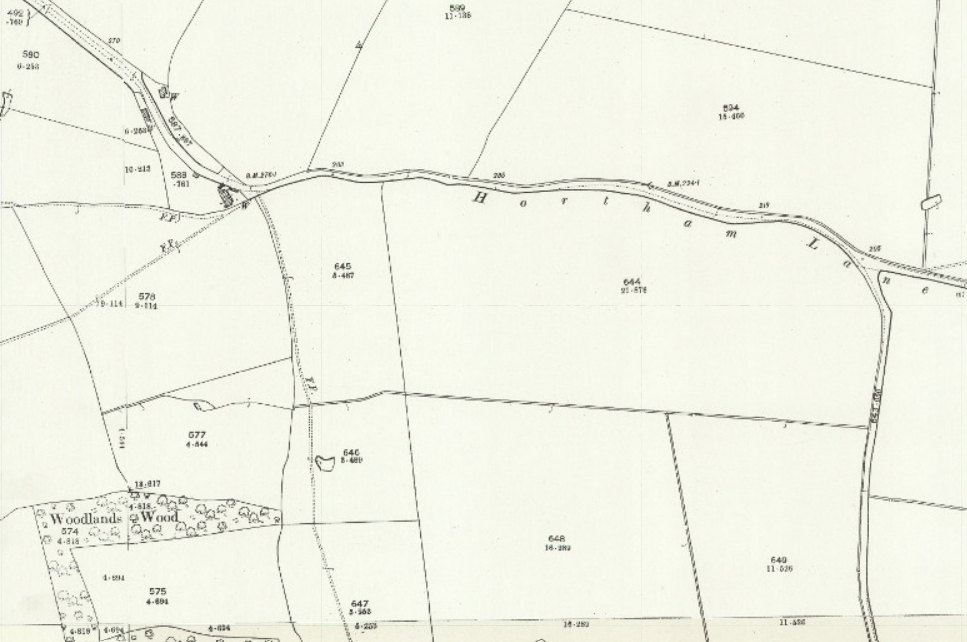
During the original building foundation excavations a number of roman coins and fossils were found. These can be seen at the Bristol Museum. Years later when adding an extension to the male ward of the hospital block further roman remains were found which was suspected to be part of a farm.
The total in 1925 had cost £210,000, £9.8m in today’s money. Building work began in May 1929 and By May 1931 the building work had been completed. The principal architects were W.S Skinner and Sons and the general contractor was H. Bell & Sons. It took Bristol Corporation a further 6 months to furnish and prepare the site ready for the first admission in Nov 1931. It was originally designed to house 600 patients,
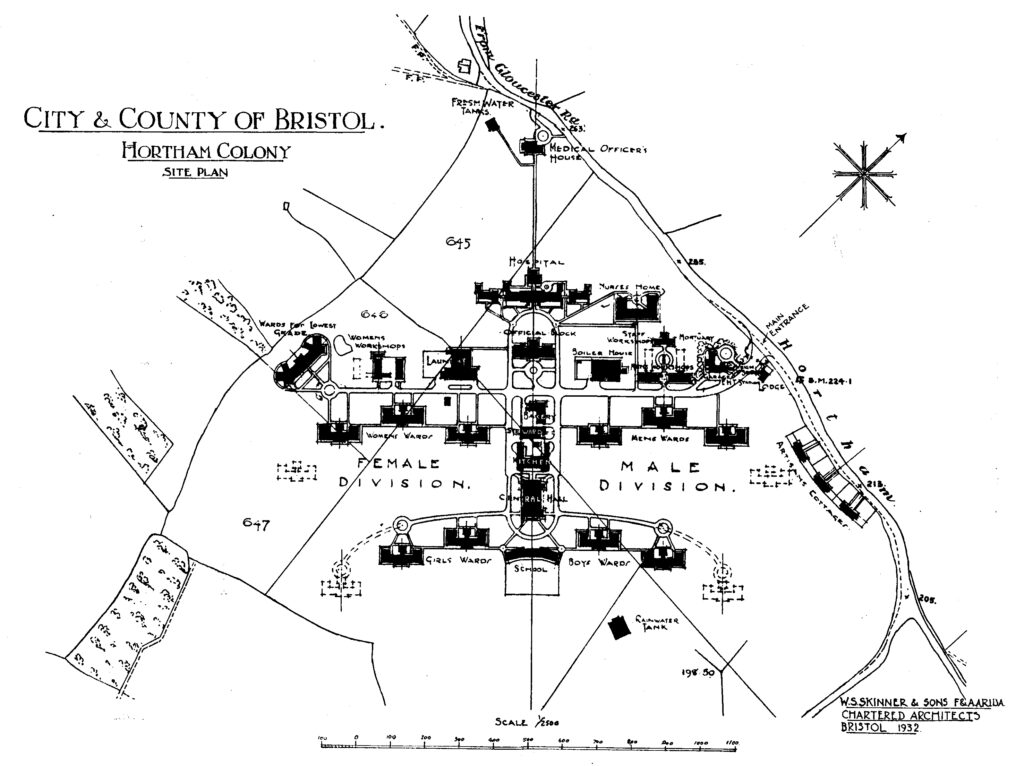
On the 16th November 1931 nine men and ten women from the Stapleton Poor Law institution arrived at Hortham. These patients were initially selected following an assessment that meant that following proper training and care, they may well be rehabilitated back into the community. Exactly one month later there was a total of 84 patients resident at Hortham.
Following a Christmas break, the admissions continued and by the end of March ’32 there was a total of 192 patients, they had come from either Stapleton, Stourbridge and Southmead Poor Law Insititute’s.
The official opening didn’t come until 29th April ’32. The minister of Health – Right Honourable Sir Edward Hilton Young was invited to officially open the Colony. Approximately 300 Guests were invited including the Lord Mayor & Lady Mayoress of Bristol as well as other prominent councilors.
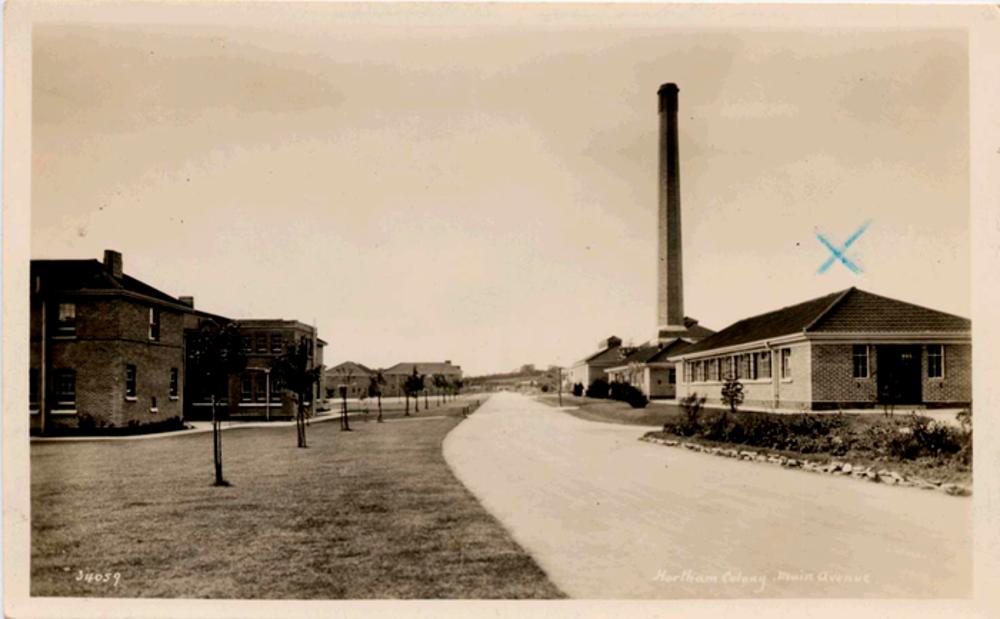
The next few years the Colony was ‘finding its feet’ with continuous and imaginative training policies, recreational and social activities as well as the use of advanced medicine and techniques. A lot of emphasis was given the environmental influence such as open outdoor space, and home comforts where every effort was made to provide nice furniture
and pleasant decorations. Every effort was made to gives the patients a sense of community and purpose, teaching them life skills, trades, land cultivation and crafts with the aim to be as self-supporting in the future as possible.
The success of the early years was credited to the Medical Superintendent – Dr. Lyons, himself a proud family. He’d brought to Hortham skills and leadership, that he used to mould patients and staff into what he described as “our family at Hortham”. This concept built the foundations of the warm and friendly atmosphere at Hortham that so many visitors commented on over the years
Text has been summarised from booklet Hortham Hospital – History of Change by Basil Upham & Philip Roberts published in 1982.

